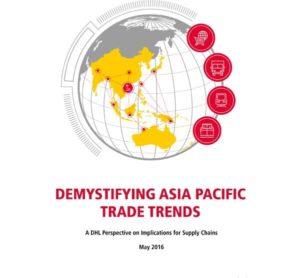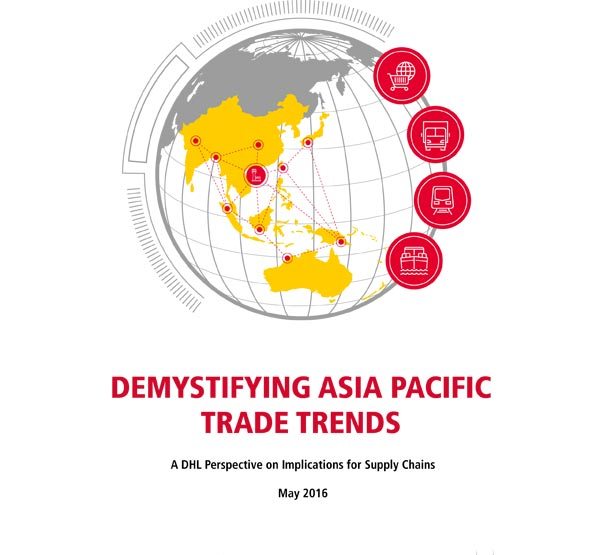 Six Asian emerging economies (The Asian 6) are expected to be at the forefront as intra-Asia-Pacific (APAC) trade plays an increasingly important role in global economic growth, says a new DHL study.
Six Asian emerging economies (The Asian 6) are expected to be at the forefront as intra-Asia-Pacific (APAC) trade plays an increasingly important role in global economic growth, says a new DHL study.
The DHL study “Demystifying Asia Pacific Trade Trends” said intra-APAC trade and the six major economies of China, India, Vietnam, Thailand, Indonesia, and Malaysia will continue to grow, and this will have supply chain implications for the rest of the world.
“In the current fragile global macroeconomic environment, the APAC region remains a beacon of optimism, positioned to be the world’s fastest growing region with trade as a key growth sector. APAC’s importance in world trade will continue to grow with intra-APAC trade lanes projected to account for 50 percent of top 15 global trade lanes by 2030,” said the document.
Emerging manufacturing hubs, increasing domestic consumption, and rapidly growing e-commerce are key drivers of APAC’s strong growth. China remains the world’s undisputed manufacturing hub, even as companies diversify operations to neighboring emerging markets such as India and Vietnam. Businesses are adopting the so-called “Plus One” strategy due to increasing labor costs, the growing need for resilience, and strong potential in these markets. Trade initiatives such as the Trans-Pacific Partnership (TPP) will make APAC countries even more attractive as manufacturing bases, especially Vietnam.
“Investments in six high potential Asian economies (China, India, Vietnam, Thailand, Indonesia, and Malaysia) as well as into trade-lanes, such as China-India and China-Indonesia which enter the Top 15 trade lanes globally by 2030, are crucial,” said the report.
“To exploit this increase in regional-movement of goods, businesses should be looking to invest in the Asian 6 economies. Companies must leverage on initiatives such as TPP, ASEAN Economic Community (AEC), and China’s Belt and Road, to lower barriers in intra-APAC trade and increase multimodal transport solutions. Businesses have opportunities to adopt new regional strategies delivering better service at lower cost,” said DHL.
E-commerce as catalyst
Cross-border e-commerce infrastructure will be a critical growth enabler in the region. The rise of e-commerce has enabled SMEs to reach across borders to access new markets, leading to increasing cross-border trade.
“Asia Pacific is the world’s biggest and fastest growing B2C e-commerce region, recording US$877.61 billion in retail e-commerce sales in 2015, and is expected to grow to over US$1.89 trillion by 2018. The rise of e-commerce has triggered changing purchasing behavior and consumer expectations. APAC consumers demand a highly personalized shopping journey with the convenience of shopping on- and offline, and the ability to move seamlessly across channels,” said the report. “To meet changing consumer expectations companies must adopt an omni-channel strategy. Convenience to consumers is as important as providing fast and reliable logistics solutions.”
“E-commerce logistics is changing rapidly confronting logistics with new issues and opportunities. The complexity in regulations, and fragmentation in the logistics marketplace, are forcing the industry to develop better fulfillment solutions for end-to-end B2B, B2C, and now increasingly B2B2C sales,” said DHL.





